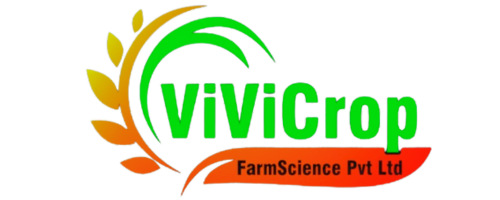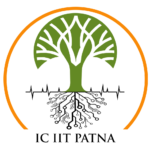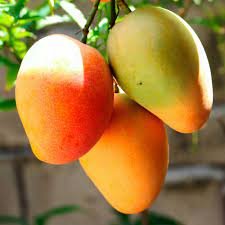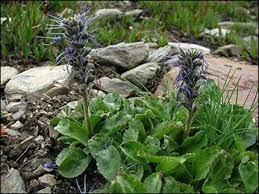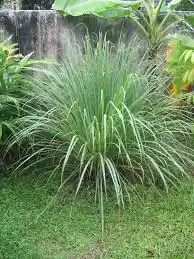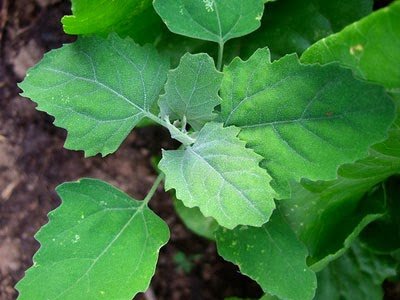Arum Nutrition Requirements
Nutrition required by Arum at each stage of its life cycle.
SOIL PREPARATION
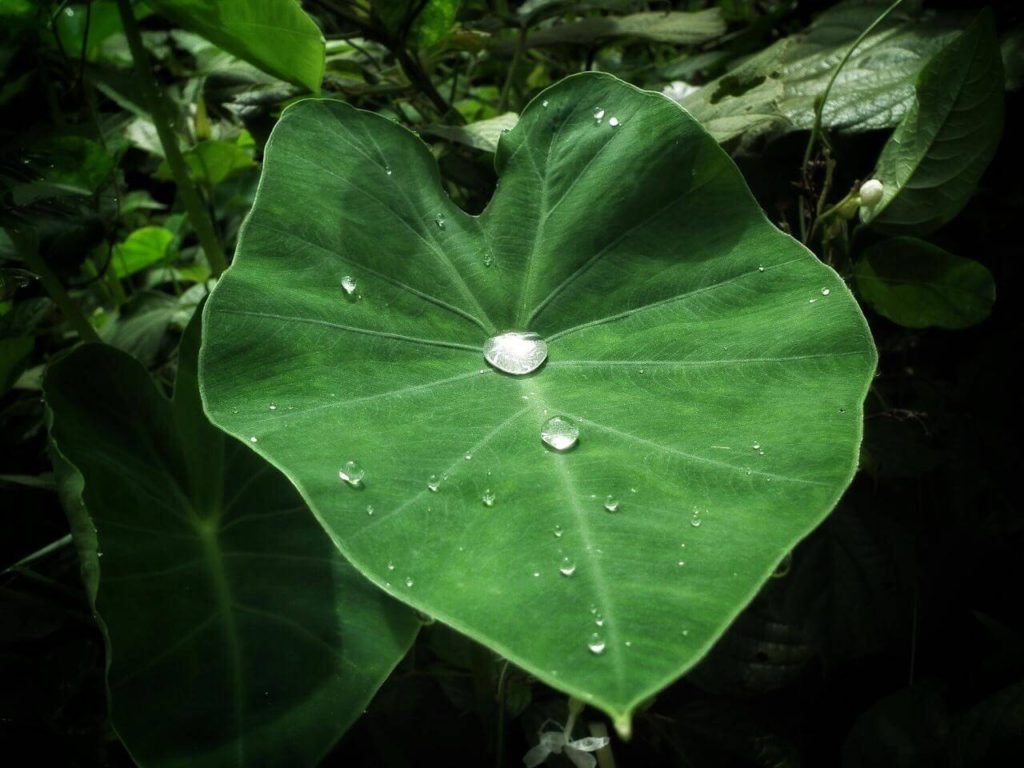
Soil Preparation
Soil preparation is crucial for the successful cultivation of Arum (Colocasia, Taro, or Arbi). Here's a guide to the soil preparation method and nutrition requirements at the soil preparation stage:
**Soil Preparation Method:**
1. **Site Selection**: Choose a well-drained area with loamy or sandy loam soil for planting Arum. Ensure the site receives partial shade to full sun, as Arum prefers filtered sunlight.
2. **Soil Testing**: Conduct a soil test to determine the pH level and nutrient content of the soil. Arum thrives in slightly acidic to neutral soil with a pH range of 5.5 to 7.0.
3. **Soil Amendments**: Based on the soil test results, amend the soil as necessary to optimize fertility and pH level. Add organic matter such as compost, well-rotted manure, or leaf mold to improve soil structure and fertility.
4. **Tillage**: Till the soil to a depth of 8 to 10 inches to loosen compacted soil and improve drainage. Remove any rocks, debris, or weeds from the planting area.
5. **Bed Preparation**: Create raised beds or mounds for planting Arum to improve soil drainage and aeration. Beds should be 8 to 12 inches high and spaced 2 to 3 feet apart, with rows spaced 3 to 4 feet apart.
6. **Mulching**: Apply a layer of organic mulch such as straw, leaves, or grass clippings to the soil surface to conserve moisture, suppress weeds, and improve soil fertility.
7. **Irrigation**: Ensure the planting area has access to adequate water for irrigation, as Arum requires consistent soil moisture for optimal growth.
**Nutrition Requirements:**
1. **Nitrogen (N)**: Arum requires a moderate to high level of nitrogen for healthy growth and foliage development. Incorporate nitrogen-rich fertilizers such as composted manure, blood meal, or fish emulsion into the soil during the soil preparation stage.
2. **Phosphorus (P)**: Phosphorus is essential for root development and overall plant vigor. Ensure the soil contains adequate phosphorus by incorporating phosphorus-rich fertilizers such as bone meal or rock phosphate into the soil during soil preparation.
3. **Potassium (K)**: Potassium promotes overall plant health and stress resistance in Arum. Incorporate potassium-rich fertilizers such as potassium sulfate or potassium chloride into the soil during soil preparation to meet the plant's potassium needs.
4. **Micronutrients**: Arum requires essential micronutrients such as iron, magnesium, calcium, and sulfur for healthy growth and development. Ensure the soil contains adequate levels of micronutrients by incorporating micronutrient-rich fertilizers or organic amendments into the soil during soil preparation.
5. **pH Level**: Maintain the soil pH level within the optimal range of 5.5 to 7.0 for Arum cultivation. Adjust the pH level as necessary using lime to raise pH or sulfur to lower pH based on the results of the soil test conducted during soil preparation.
By following this soil preparation method and meeting the nutrition requirements, you can create an optimal growing environment for Arum (Colocasia, Taro, or Arbi) and support healthy growth and development throughout the growing season.
Early Growth (Germination to Establishment)

Early Growth
During the early growth stages of Arum (Colocasia, Taro, or Arbi), providing appropriate nutrition is crucial for healthy plant development. Here are the general nutrition requirements for Arum during the germination to establishment stage:
1. **Macronutrients**:
a. **Nitrogen (N)**: Nitrogen is essential for vegetative growth, including leaf and root development, during the early growth stages. Adequate nitrogen promotes healthy foliage and ensures robust plant establishment.
b. **Phosphorus (P)**: Phosphorus is important for root development, energy transfer, and overall plant growth. It supports early root establishment and promotes healthy shoot growth.
c. **Potassium (K)**: Potassium plays a role in overall plant vigor and stress resistance. It helps in water and nutrient uptake, improves disease resistance, and supports early growth stages.
2. **Micronutrients**:
a. **Iron (Fe)**: Iron is necessary for chlorophyll synthesis and overall plant health. Adequate iron availability ensures healthy leaf coloration and photosynthesis during the early growth stages.
b. **Zinc (Zn)**: Zinc is essential for enzyme activation and various metabolic processes in plants. It supports root development and early growth stages.
c. **Manganese (Mn)**: Manganese is involved in photosynthesis, root growth, and enzyme activation. It supports healthy plant growth during early development.
3. **Calcium (Ca)**: Calcium is important for cell wall formation and structural integrity. It supports root and shoot growth and helps in preventing disorders like tip burn.
4. **Magnesium (Mg)**: Magnesium is a constituent of chlorophyll and plays a crucial role in photosynthesis. It supports early growth and development of leaves.
5. **Sulfur (S)**: Sulfur is essential for protein synthesis and overall plant metabolism. It supports early growth and development.
6. **Boron (B)**: Boron is necessary for cell wall formation, sugar transport, and reproductive development. It supports early root and shoot growth.
7. **Copper (Cu)**: Copper is involved in enzyme activation and electron transfer reactions. It supports various metabolic processes during early growth stages.
8. **Molybdenum (Mo)**: Molybdenum is essential for nitrogen fixation and enzyme activity. It supports overall plant growth during early stages.
To provide these nutrients during the early growth stages of Arum, you can:
- Apply a balanced fertilizer with appropriate N-P-K ratios.
- Incorporate organic matter into the soil before planting to improve nutrient availability.
- Monitor soil pH and adjust if necessary to optimize nutrient uptake.
- Use foliar fertilizers or nutrient solutions if deficiencies are observed.
- Ensure proper irrigation to support nutrient uptake and prevent nutrient leaching.
- Conduct soil tests periodically to assess nutrient levels and adjust fertilizer applications accordingly.
By meeting these nutrition requirements, you can promote healthy early growth and establishment of Arum plants, leading to vigorous growth and improved yields.
Tillering Stage (Shoot Development)

Tillering Stage
During the tillering stage, which corresponds to the early shoot development stage in plants like Arum (Colocasia, Taro, or Arbi), the nutritional requirements are crucial for healthy growth and development. Here are the key nutritional requirements for Arum plants during this stage:
1. **Nitrogen (N)**: Nitrogen is essential for promoting vigorous vegetative growth and the development of healthy shoots during the tillering stage. It plays a vital role in the formation of proteins, enzymes, and chlorophyll. Adequate nitrogen supply is necessary for optimal leaf and shoot development.
2. **Phosphorus (P)**: Phosphorus is crucial for energy transfer and various metabolic processes within the plant. It is essential for promoting root development, which supports the growth of healthy shoots during the tillering stage. Phosphorus also plays a role in photosynthesis and nutrient uptake.
3. **Potassium (K)**: Potassium is important for overall plant health and vigor. It helps regulate water uptake and transpiration, enhances disease resistance, and promotes sturdy shoot growth. Potassium is involved in enzyme activation and plays a role in carbohydrate metabolism.
4. **Calcium (Ca)**: Calcium is essential for cell wall formation and structural integrity in plants. Adequate calcium supply during the tillering stage helps promote strong and healthy shoot development. It also plays a role in nutrient uptake and enzyme activation.
5. **Magnesium (Mg)**: Magnesium is a constituent of chlorophyll and is essential for photosynthesis. It also plays a role in enzyme activation and nutrient metabolism. Adequate magnesium supply is necessary for promoting healthy shoot growth and development.
6. **Sulfur (S)**: Sulfur is a component of amino acids, proteins, and vitamins in plants. It is essential for various metabolic processes, including the synthesis of chlorophyll and enzymes. Adequate sulfur supply supports healthy shoot development during the tillering stage.
7. **Micronutrients**: Arum plants also require micronutrients such as iron (Fe), manganese (Mn), zinc (Zn), copper (Cu), boron (B), and molybdenum (Mo) in small quantities. These micronutrients play essential roles in enzyme activation, photosynthesis, and overall plant health.
To ensure proper nutrition during the tillering stage for Arum plants, it is important to provide balanced fertilization based on soil testing and nutritional requirements. This may involve the application of fertilizers containing nitrogen, phosphorus, potassium, and micronutrients, either through soil application or foliar spray, following recommended application rates and timings. Additionally, maintaining proper soil pH and organic matter levels can also help optimize nutrient availability for healthy shoot development in Arum plants.
Flowering

Flowering
During the flowering stage, Arum plants (Colocasia, Taro, or Arbi) have specific nutritional requirements to support flower development and overall plant health. Here are the key nutrients needed during this stage:
1. **Phosphorus (P)**: Phosphorus is crucial for flower formation and development in Arum plants. It plays a vital role in energy transfer processes within the plant, which are essential for the production of flowers and seeds. Ensure an adequate supply of phosphorus to support healthy flowering.
2. **Potassium (K)**: Potassium is essential for overall plant growth and plays a role in flower and fruit development. It helps regulate water uptake and nutrient transport within the plant, contributing to flower formation and quality. Provide sufficient potassium to promote robust flowering in Arum plants.
3. **Nitrogen (N)**: While nitrogen is essential for overall plant growth, excessive nitrogen levels during the flowering stage can lead to lush vegetative growth at the expense of flower production. It's important to maintain a balanced nitrogen supply to support both vegetative growth and flower development.
4. **Calcium (Ca)**: Calcium is essential for cell wall development and structural integrity in plants. Adequate calcium levels during the flowering stage help ensure proper flower formation and reduce the risk of disorders such as blossom end rot.
5. **Magnesium (Mg)**: Magnesium is a component of chlorophyll, the pigment responsible for photosynthesis. It also plays a role in enzyme activation and nutrient uptake in plants. Ensure sufficient magnesium levels to support healthy photosynthesis and overall plant metabolism during the flowering stage.
6. **Micronutrients**: Arum plants also require various micronutrients such as iron, manganese, zinc, copper, and boron during the flowering stage. These micronutrients play essential roles in enzyme activation, photosynthesis, and overall plant health. Ensure that the soil or growing medium contains adequate levels of these micronutrients to support healthy flower development.
**Nutritional Recommendations**:
1. Conduct a soil test before planting to assess nutrient levels and pH, and make any necessary adjustments to ensure optimal fertility for Arum plants during the flowering stage.
2. Apply a balanced fertilizer with a formulation such as 10-10-10 or 5-10-10, or a fertilizer specifically formulated for flowering plants, according to soil test recommendations and plant nutrient requirements.
3. Monitor plant health and adjust fertilizer applications as needed based on visual symptoms and plant response. Avoid over-fertilization, which can lead to nutrient imbalances and negatively impact flower development.
4. Maintain proper irrigation practices to ensure adequate moisture levels in the soil during the flowering stage. Proper moisture management helps facilitate nutrient uptake and supports healthy flower development.
5. Consider foliar feeding with micronutrient-rich fertilizers or nutrient solutions during the flowering stage to supplement soil-applied nutrients and ensure optimal nutrient availability to the plants.
By meeting these nutritional requirements and providing optimal growing conditions, you can promote healthy flower development and overall plant vigor in Arum (Colocasia, Taro, or Arbi) during the flowering stage.
Matchuration & Ripening

Matchuration & Ripening
During the maturation and ripening stages of Arum plants (Colocasia, Taro, or Arbi), proper nutrition is essential to support the development of healthy corms (underground storage stems) and ensure optimal yield and quality. Here are the basic nutrition requirements for Arum plants during this stage:
1. **Water**:
- Adequate water supply is crucial during the maturation and ripening stages to support corm enlargement and prevent water stress. Ensure consistent soil moisture without waterlogging to promote healthy growth.
2. **Light**:
- Arum plants require ample sunlight for photosynthesis and carbohydrate accumulation in corms during the maturation and ripening stages. Ensure they receive full sun exposure for at least 6-8 hours per day.
3. **Nutrients**:
- Balanced nutrients are essential for corm development, enlargement, and starch accumulation during the maturation and ripening stages. Key nutrients needed include:
- Potassium (K): Important for corm development, starch synthesis, and overall plant health.
- Phosphorus (P): Necessary for energy transfer and carbohydrate metabolism, crucial for corm maturation.
- Nitrogen (N): Required for vegetative growth and foliage development; reduce nitrogen fertilization during this stage to avoid excessive vegetative growth at the expense of corm development.
- Micronutrients: Ensure availability of essential micronutrients such as iron, manganese, zinc, and copper through soil supplementation or foliar application if deficient.
4. **Fertilization**:
- Apply a balanced fertilizer with a higher proportion of potassium (K) to promote corm enlargement, starch accumulation, and overall plant health.
- Adjust fertilizer application rates based on soil test results and plant nutrient requirements to meet the specific nutritional needs of Arum plants during the maturation and ripening stages.
5. **pH Level**:
- Maintain soil pH in the range of 5.5 to 7.0 for optimal nutrient availability and uptake by Arum plants during the maturation and ripening stages.
6. **Soil**:
- Ensure well-draining soil with good organic matter content to support healthy corm development and nutrient uptake.
- Avoid waterlogging, as it can lead to root rot and hinder corm maturation and ripening.
7. **Mulching**:
- Apply organic mulch around Arum plants to conserve soil moisture, suppress weeds, and gradually release nutrients as it decomposes.
8. **Monitoring and Adjustments**:
- Regularly monitor plant growth, corm development, and soil moisture levels to ensure proper nutrition during the maturation and ripening stages.
- Adjust fertilizer application rates and irrigation practices based on plant response, soil test results, and environmental conditions to optimize corm yield and quality.
By providing adequate water, sunlight, balanced nutrients, proper soil conditions, and regular monitoring, you can ensure healthy maturation and ripening of Arum plants, leading to optimal corm development and quality. Adjustments to cultural practices and fertilization may be necessary based on specific soil conditions, plant responses, and environmental factors.
Harvesting

Harvesting
During the harvesting stage of Arum (Colocasia, Taro, or Arbi) plants, it's important to ensure that the plants have received adequate nutrition throughout their growth cycle to support optimal tuber development and overall plant health. Here are the key nutritional requirements and procedures to follow during the harvesting stage:
1. **Nutritional Requirements**:
a. **Potassium (K)**: Adequate potassium is essential for tuber development and quality. Potassium helps regulate water uptake and storage within the tubers, contributing to their firmness and size.
b. **Phosphorus (P)**: Phosphorus is important for promoting root and tuber development. It aids in energy transfer and carbohydrate metabolism, supporting the growth and yield of healthy tubers.
c. **Nitrogen (N)**: While nitrogen is important throughout the plant's growth cycle, reducing nitrogen availability during the later stages of growth can promote tuber bulking and improve tuber quality by reducing leafy growth.
d. **Calcium (Ca)**: Calcium is essential for preventing disorders like calcium deficiency and corky scab in tubers. Adequate calcium uptake ensures the development of healthy and firm tubers.
e. **Micronutrients**: Micronutrients such as iron (Fe), manganese (Mn), zinc (Zn), and boron (B) are also important for overall plant health and tuber development. Deficiencies in micronutrients can affect tuber quality and yield.
2. **Procedure**:
a. **Soil Testing**: Before planting, conduct soil tests to assess nutrient levels and pH. Adjust soil fertility and pH as needed to meet the nutritional requirements of Arum plants.
b. **Fertilization**: Based on soil test results and nutrient requirements, apply balanced fertilizers containing potassium, phosphorus, and micronutrients to the soil before planting. Follow recommended application rates and timings.
c. **Side Dressing**: During the growing season, consider side dressing with potassium-rich fertilizers to support tuber development. Apply fertilizers evenly around the plants and incorporate them into the soil.
d. **Mulching**: Mulching around the base of Arum plants can help conserve soil moisture and regulate soil temperature, promoting optimal tuber development. Use organic mulches like straw or compost.
e. **Water Management**: Ensure consistent and adequate irrigation throughout the growing season, especially during tuber formation and bulking stages. Avoid water stress, as it can affect tuber development and quality.
f. **Harvest Timing**: Harvest Arum tubers when they reach maturity, typically indicated by the yellowing and drying of foliage. Carefully dig up the tubers to avoid damage, and handle them gently during harvesting and post-harvest handling.
g. **Post-Harvest Handling**: After harvesting, carefully clean and inspect the tubers. Store them in a cool, dry, and well-ventilated area to prevent rotting and maintain quality.
By following these nutritional requirements and procedures during the harvesting stage, you can ensure the production of healthy and high-quality Arum tubers.
Arum Farming Economics
Get details of Profitability and cost estimate in growing Arum per acres of Land.
SOIL PREPARATION

Soil Preparation
Soil preparation is crucial for successful bottle gourd cultivation, as it lays the foundation for healthy plant growth and high yields. Here's a guide on the soil preparation method and nutrition requirements at the soil preparation stage for bottle gourd:
### Soil Preparation Method:
1. **Site Selection**:
- Choose a well-drained site with plenty of sunlight for planting bottle gourd. Avoid areas prone to waterlogging or flooding.
2. **Soil Testing**:
- Conduct a soil test to determine the pH and nutrient levels of the soil. Bottle gourd thrives in slightly acidic to neutral soil with a pH range of 6.0 to 7.0.
3. **Clearing and Tilling**:
- Clear the planting area of weeds, rocks, and debris. Use a tiller or hoe to break up the soil and create a fine, crumbly seedbed.
4. **Amendments**:
- Based on the soil test results, amend the soil with organic matter such as compost, well-rotted manure, or leaf mold to improve soil structure, fertility, and moisture retention.
5. **Fertilization**:
- Incorporate balanced fertilizers or organic fertilizers into the soil according to the recommended rates for bottle gourd cultivation. A general guideline is to apply 1 to 2 pounds of nitrogen, phosphorus, and potassium (NPK) fertilizer per 100 square feet of planting area.
6. **Bed Preparation**:
- Create raised beds or mounds to improve drainage and prevent waterlogging. Ensure that the beds are well-compacted and leveled for uniform planting and irrigation.
7. **Mulching**:
- Apply a layer of organic mulch such as straw, hay, or shredded leaves to the soil surface to suppress weed growth, conserve soil moisture, and regulate soil temperature.
8. **Final Bed Preparation**:
- Rake the soil surface to create a smooth, level planting bed. Make shallow furrows or planting holes spaced according to the recommended planting distance for bottle gourd.
### Nutrition Requirements:
During the soil preparation stage, bottle gourd has specific nutrition requirements to support healthy plant growth and development. Here are the key nutrients needed:
1. **Nitrogen (N)**:
- Nitrogen is essential for promoting vigorous vegetative growth and overall plant health. Incorporate nitrogen-rich fertilizers or organic amendments into the soil to provide a steady supply of nitrogen for bottle gourd plants.
2. **Phosphorus (P)**:
- Phosphorus is important for root development, flowering, and fruit set in bottle gourd plants. Apply phosphorus-rich fertilizers or bone meal to the soil to support strong root growth and overall plant vigor.
3. **Potassium (K)**:
- Potassium plays a crucial role in plant metabolism, water regulation, and fruit development. Ensure adequate potassium levels in the soil by applying potassium-rich fertilizers such as potassium sulfate or potassium chloride.
4. **Calcium (Ca)**:
- Calcium contributes to cell wall formation, fruit quality, and disease resistance in bottle gourd plants. Incorporate calcium sources such as gypsum or lime into the soil to prevent calcium-related disorders and support healthy plant growth.
5. **Magnesium (Mg)**:
- Magnesium is a component of chlorophyll and essential for photosynthesis and enzyme activation in bottle gourd plants. Ensure sufficient magnesium levels in the soil by applying magnesium sulfate (Epsom salt) or other magnesium-containing fertilizers.
6. **Micronutrients**:
- Micronutrients such as iron, manganese, zinc, copper, boron, and molybdenum are required in small amounts but are crucial for various physiological processes in bottle gourd plants. Monitor soil micronutrient levels and apply micronutrient fertilizers or foliar sprays as needed to prevent deficiencies.
By following these soil preparation methods and addressing the specific nutrition requirements of bottle gourd plants, you can create an optimal growing environment for healthy plant growth and high yields. Regular soil testing and monitoring of plant health will help ensure that nutrient requirements are met throughout the growing season.
Early Growth (Germination to Establishment)

Early Growth
During the early growth stage, from germination to establishment, bottle gourd plants have specific nutritional requirements to support vigorous vegetative growth and root development. Here are the key nutrients needed during this stage:
1. **Nitrogen (N)**:
- Nitrogen is essential for promoting early vegetative growth, including leaf and stem development. It is a crucial component of chlorophyll, the green pigment responsible for photosynthesis.
- Apply nitrogen-rich fertilizers or organic amendments to provide a steady supply of nitrogen to support healthy plant growth during the early stages.
2. **Phosphorus (P)**:
- Phosphorus plays a vital role in root development, energy transfer, and overall plant metabolism. Adequate phosphorus levels are crucial for establishing a strong root system, which enables the plant to absorb water and nutrients efficiently.
- Incorporate phosphorus-rich fertilizers or bone meal into the soil to support root growth and early plant establishment.
3. **Potassium (K)**:
- Potassium is important for promoting overall plant vigor, water regulation, and disease resistance. It helps plants withstand environmental stress and promotes balanced growth.
- Apply potassium-rich fertilizers such as potassium sulfate or potassium chloride to ensure an adequate supply of potassium for early growth and establishment.
4. **Calcium (Ca)**:
- Calcium is essential for cell wall formation, structural integrity, and disease resistance in bottle gourd plants. Adequate calcium levels are crucial for preventing disorders such as blossom end rot.
- Incorporate calcium sources such as gypsum or lime into the soil to provide sufficient calcium for early plant growth and development.
5. **Magnesium (Mg)**:
- Magnesium is a component of chlorophyll and essential for photosynthesis, enzyme activation, and overall plant metabolism. It plays a vital role in energy transfer and nutrient uptake.
- Ensure sufficient magnesium levels in the soil by applying magnesium sulfate (Epsom salt) or other magnesium-containing fertilizers to support early growth and establishment.
6. **Micronutrients**:
- Micronutrients such as iron, manganese, zinc, copper, boron, and molybdenum are required in small amounts but are crucial for various physiological processes during early plant growth.
- Monitor soil micronutrient levels and provide micronutrient fertilizers or foliar sprays as needed to prevent deficiencies and promote healthy plant growth.
By providing the appropriate balance of these nutrients during the early growth stage, you can support vigorous vegetative growth, strong root development, and overall plant health in bottle gourd plants. Regular soil testing and monitoring of plant health will help ensure that nutrient requirements are met throughout the growing season.
Tillering Stage (Shoot Development)

Tillering Stage
Soil preparation is a crucial step in wheat cultivation, as it directly affects the crop's growth and yield. Here are the soil preparation methods and nutrition requirements at the soil preparation stage for wheat:
Soil Preparation Method:
Land Preparation: Plow the field to break the soil and turn it over. Use a disc harrow or cultivator to further break down clods and level the soil. Ensure proper seedbed preparation by creating a fine, well-tilled soil surface.
Seedbed Preparation: Level the field to provide a uniform surface for planting. Use a roller or a harrow to firm up the soil to facilitate seed-to-soil contact. Remove any weeds or crop residues from the previous season to reduce competition with the wheat crop.
Seed Rate and Sowing: Determine the appropriate seed rate based on the variety and local recommendations. Use a suitable seed drill for uniform and precise sowing. Ensure proper seed depth according to recommended guidelines.
Fertilization: Apply a balanced fertilizer based on soil nutrient analysis and regional recommendations. Incorporate fertilizers into the soil during seedbed preparation. Consider applying phosphorus and potassium along with nitrogen for optimal wheat growth.
Organic Matter: Incorporate well-rotted organic matter, such as compost or manure, into the soil. Organic matter enhances soil structure, water retention, and nutrient availability.
pH Adjustment: Check and adjust soil pH to the recommended range for wheat cultivation (typically around 6.0 to 7.5). Lime may be added to raise pH, and sulfur may be added to lower pH as needed.
Nutrition Requirement at Soil Preparation Stage: Nitrogen (N): Nitrogen is essential for vegetative growth and is crucial during the early stages of wheat development. Apply nitrogen fertilizer during soil preparation to provide an initial boost to the crop.
Phosphorus (P): Phosphorus is vital for root development and early plant establishment. Apply phosphorus-containing fertilizers, such as diammonium phosphate (DAP), during soil preparation.
Potassium (K): Potassium supports overall plant health, disease resistance, and drought tolerance. Apply potassium-containing fertilizers, such as potassium chloride (Muriate of Potash), during soil preparation.
Micronutrients: Consider incorporating micronutrients like zinc, copper, and boron based on soil testing results. Micronutrients play essential roles in enzyme activities and overall plant health.
Organic Matter: Organic matter contributes to nutrient availability and improves the soil's water-holding capacity. Ensure a good supply of organic matter through the incorporation of well-decomposed compost or manure.
Soil pH: Adjust soil pH to the recommended range for wheat cultivation to optimize nutrient uptake by the plants.
Microbial Activity: Encourage beneficial microbial activity in the soil by incorporating organic matter. Healthy soil microbial communities contribute to nutrient cycling and availability.
Water Management: Ensure proper drainage to prevent waterlogging, which can negatively impact nutrient uptake. Irrigate if necessary to maintain adequate soil moisture during wheat establishment.
Flowering

Flowering
Soil preparation is a crucial step in wheat cultivation, as it directly affects the crop's growth and yield. Here are the soil preparation methods and nutrition requirements at the soil preparation stage for wheat:
Soil Preparation Method:
Land Preparation: Plow the field to break the soil and turn it over. Use a disc harrow or cultivator to further break down clods and level the soil. Ensure proper seedbed preparation by creating a fine, well-tilled soil surface.
Seedbed Preparation: Level the field to provide a uniform surface for planting. Use a roller or a harrow to firm up the soil to facilitate seed-to-soil contact. Remove any weeds or crop residues from the previous season to reduce competition with the wheat crop.
Seed Rate and Sowing: Determine the appropriate seed rate based on the variety and local recommendations. Use a suitable seed drill for uniform and precise sowing. Ensure proper seed depth according to recommended guidelines.
Fertilization: Apply a balanced fertilizer based on soil nutrient analysis and regional recommendations. Incorporate fertilizers into the soil during seedbed preparation. Consider applying phosphorus and potassium along with nitrogen for optimal wheat growth.
Organic Matter: Incorporate well-rotted organic matter, such as compost or manure, into the soil. Organic matter enhances soil structure, water retention, and nutrient availability.
pH Adjustment: Check and adjust soil pH to the recommended range for wheat cultivation (typically around 6.0 to 7.5). Lime may be added to raise pH, and sulfur may be added to lower pH as needed.
Nutrition Requirement at Soil Preparation Stage: Nitrogen (N): Nitrogen is essential for vegetative growth and is crucial during the early stages of wheat development. Apply nitrogen fertilizer during soil preparation to provide an initial boost to the crop.
Phosphorus (P): Phosphorus is vital for root development and early plant establishment. Apply phosphorus-containing fertilizers, such as diammonium phosphate (DAP), during soil preparation.
Potassium (K): Potassium supports overall plant health, disease resistance, and drought tolerance. Apply potassium-containing fertilizers, such as potassium chloride (Muriate of Potash), during soil preparation.
Micronutrients: Consider incorporating micronutrients like zinc, copper, and boron based on soil testing results. Micronutrients play essential roles in enzyme activities and overall plant health.
Organic Matter: Organic matter contributes to nutrient availability and improves the soil's water-holding capacity. Ensure a good supply of organic matter through the incorporation of well-decomposed compost or manure.
Soil pH: Adjust soil pH to the recommended range for wheat cultivation to optimize nutrient uptake by the plants.
Microbial Activity: Encourage beneficial microbial activity in the soil by incorporating organic matter. Healthy soil microbial communities contribute to nutrient cycling and availability.
Water Management: Ensure proper drainage to prevent waterlogging, which can negatively impact nutrient uptake. Irrigate if necessary to maintain adequate soil moisture during wheat establishment.
Matchuration & Ripening

Matchuration & Ripening
Soil preparation is a crucial step in wheat cultivation, as it directly affects the crop's growth and yield. Here are the soil preparation methods and nutrition requirements at the soil preparation stage for wheat:
Soil Preparation Method:
Land Preparation: Plow the field to break the soil and turn it over. Use a disc harrow or cultivator to further break down clods and level the soil. Ensure proper seedbed preparation by creating a fine, well-tilled soil surface.
Seedbed Preparation: Level the field to provide a uniform surface for planting. Use a roller or a harrow to firm up the soil to facilitate seed-to-soil contact. Remove any weeds or crop residues from the previous season to reduce competition with the wheat crop.
Seed Rate and Sowing: Determine the appropriate seed rate based on the variety and local recommendations. Use a suitable seed drill for uniform and precise sowing. Ensure proper seed depth according to recommended guidelines.
Fertilization: Apply a balanced fertilizer based on soil nutrient analysis and regional recommendations. Incorporate fertilizers into the soil during seedbed preparation. Consider applying phosphorus and potassium along with nitrogen for optimal wheat growth.
Organic Matter: Incorporate well-rotted organic matter, such as compost or manure, into the soil. Organic matter enhances soil structure, water retention, and nutrient availability.
pH Adjustment: Check and adjust soil pH to the recommended range for wheat cultivation (typically around 6.0 to 7.5). Lime may be added to raise pH, and sulfur may be added to lower pH as needed.
Nutrition Requirement at Soil Preparation Stage: Nitrogen (N): Nitrogen is essential for vegetative growth and is crucial during the early stages of wheat development. Apply nitrogen fertilizer during soil preparation to provide an initial boost to the crop.
Phosphorus (P): Phosphorus is vital for root development and early plant establishment. Apply phosphorus-containing fertilizers, such as diammonium phosphate (DAP), during soil preparation.
Potassium (K): Potassium supports overall plant health, disease resistance, and drought tolerance. Apply potassium-containing fertilizers, such as potassium chloride (Muriate of Potash), during soil preparation.
Micronutrients: Consider incorporating micronutrients like zinc, copper, and boron based on soil testing results. Micronutrients play essential roles in enzyme activities and overall plant health.
Organic Matter: Organic matter contributes to nutrient availability and improves the soil's water-holding capacity. Ensure a good supply of organic matter through the incorporation of well-decomposed compost or manure.
Soil pH: Adjust soil pH to the recommended range for wheat cultivation to optimize nutrient uptake by the plants.
Microbial Activity: Encourage beneficial microbial activity in the soil by incorporating organic matter. Healthy soil microbial communities contribute to nutrient cycling and availability.
Water Management: Ensure proper drainage to prevent waterlogging, which can negatively impact nutrient uptake. Irrigate if necessary to maintain adequate soil moisture during wheat establishment.
Harvesting

Harvesting
Soil preparation is a crucial step in wheat cultivation, as it directly affects the crop's growth and yield. Here are the soil preparation methods and nutrition requirements at the soil preparation stage for wheat:
Soil Preparation Method:
Land Preparation: Plow the field to break the soil and turn it over. Use a disc harrow or cultivator to further break down clods and level the soil. Ensure proper seedbed preparation by creating a fine, well-tilled soil surface.
Seedbed Preparation: Level the field to provide a uniform surface for planting. Use a roller or a harrow to firm up the soil to facilitate seed-to-soil contact. Remove any weeds or crop residues from the previous season to reduce competition with the wheat crop.
Seed Rate and Sowing: Determine the appropriate seed rate based on the variety and local recommendations. Use a suitable seed drill for uniform and precise sowing. Ensure proper seed depth according to recommended guidelines.
Fertilization: Apply a balanced fertilizer based on soil nutrient analysis and regional recommendations. Incorporate fertilizers into the soil during seedbed preparation. Consider applying phosphorus and potassium along with nitrogen for optimal wheat growth.
Organic Matter: Incorporate well-rotted organic matter, such as compost or manure, into the soil. Organic matter enhances soil structure, water retention, and nutrient availability.
pH Adjustment: Check and adjust soil pH to the recommended range for wheat cultivation (typically around 6.0 to 7.5). Lime may be added to raise pH, and sulfur may be added to lower pH as needed.
Nutrition Requirement at Soil Preparation Stage: Nitrogen (N): Nitrogen is essential for vegetative growth and is crucial during the early stages of wheat development. Apply nitrogen fertilizer during soil preparation to provide an initial boost to the crop.
Phosphorus (P): Phosphorus is vital for root development and early plant establishment. Apply phosphorus-containing fertilizers, such as diammonium phosphate (DAP), during soil preparation.
Potassium (K): Potassium supports overall plant health, disease resistance, and drought tolerance. Apply potassium-containing fertilizers, such as potassium chloride (Muriate of Potash), during soil preparation.
Micronutrients: Consider incorporating micronutrients like zinc, copper, and boron based on soil testing results. Micronutrients play essential roles in enzyme activities and overall plant health.
Organic Matter: Organic matter contributes to nutrient availability and improves the soil's water-holding capacity. Ensure a good supply of organic matter through the incorporation of well-decomposed compost or manure.
Soil pH: Adjust soil pH to the recommended range for wheat cultivation to optimize nutrient uptake by the plants.
Microbial Activity: Encourage beneficial microbial activity in the soil by incorporating organic matter. Healthy soil microbial communities contribute to nutrient cycling and availability.
Water Management: Ensure proper drainage to prevent waterlogging, which can negatively impact nutrient uptake. Irrigate if necessary to maintain adequate soil moisture during wheat establishment.
Arum Disease Details
Nutrition required by Arum at each stage of its life cycle.
SOIL PREPARATION

Soil Preparation
During the soil preparation stage for Arum (Colocasia, Taro, or Arbi) cultivation, several diseases and pests can affect the plants. Here are some common ones and precautions to prevent them:
**Diseases:**
1. **Rhizome Rot**: Rhizome rot, caused by various fungal pathogens like Pythium spp. and Phytophthora spp., can affect Arum plants during soil preparation, causing decay of the rhizomes.
**Precautions**:
- Start with disease-free rhizomes from reputable sources.
- Ensure proper soil drainage to prevent waterlogging, as excessive moisture promotes fungal growth.
- Rotate crops to prevent the buildup of fungal pathogens in the soil.
- Apply fungicides labeled for rhizome rot prevention if necessary, following recommended dosage and application instructions.
2. **Root Rot**: Root rot, caused by various fungal pathogens, can affect Arum plants during soil preparation, leading to decay of the roots and poor plant growth.
**Precautions**:
- Plant Arum in well-drained soil to prevent waterlogged conditions favorable for fungal growth.
- Avoid overwatering and allow the soil to dry slightly between waterings.
- Apply fungicides labeled for root rot prevention if necessary, following recommended dosage and application instructions.
**Pests:**
1. **Nematodes**: Soil-dwelling nematodes like root-knot nematodes (Meloidogyne spp.) can infest Arum plants during soil preparation, causing stunted growth and root damage.
**Precautions**:
- Plant nematode-resistant varieties of Arum if available.
- Rotate crops with non-host plants to reduce nematode populations in the soil.
- Solarize the soil by covering it with clear plastic to kill nematodes before planting.
2. **Cutworms**: Cutworm larvae can feed on young Arum plants during soil preparation, cutting them off at the soil level.
**Precautions**:
- Use physical barriers such as cardboard collars or plastic cups with the bottoms removed to protect seedlings from cutworm damage.
- Till the soil before planting to expose cutworm pupae to predators and reduce their population.
3. **Wireworms**: Wireworms are soil-dwelling larvae of click beetles that can feed on Arum roots during soil preparation, causing damage and reduced plant growth.
**Precautions**:
- Rotate crops with non-host plants to reduce wireworm populations in the soil.
- Use bait traps or apply beneficial nematodes to control wireworm populations if necessary.
By following these precautions and practicing good gardening practices, you can minimize the risk of diseases and pests during the soil preparation stage of Arum (Colocasia, Taro, or Arbi) cultivation and ensure healthy plant growth.
Early Growth (Germination to Establishment)

Early Growing
During the early growth stages of Arum (Colocasia, Taro, or Arbi), several diseases and pests can affect the crop. Some common diseases and pests, along with precautions to prevent them, include:
1. **Diseases**:
a. **Fungal Diseases**: Fungi like Phytophthora colocasiae (causal agent of Taro leaf blight), Pythium spp., and Fusarium spp. can cause diseases such as leaf blight, root rot, and stem rot during the germination to establishment stages.
- **Precautions**: Use disease-free planting material, ensure proper drainage to prevent waterlogging, avoid over-irrigation, practice crop rotation, and apply fungicides if necessary based on the severity of the disease.
b. **Bacterial Diseases**: Bacterial pathogens like Xanthomonas campestris pv. colocasiae (causal agent of Taro bacterial blight) can infect Arum plants, causing leaf spots, stem lesions, and blighting.
- **Precautions**: Use disease-free planting material, practice strict sanitation measures, avoid overhead irrigation, apply copper-based bactericides preventively, and remove and destroy infected plant material.
c. **Viral Diseases**: Viruses like Taro vein chlorosis virus (TaVCV) and Taro vein mosaic virus (TaVMV) can infect Arum plants, causing symptoms like yellowing, mosaic patterns, and stunting.
- **Precautions**: Use virus-free planting material, control insect vectors (such as aphids and thrips) through insecticides or physical barriers like mesh nets, and practice strict sanitation measures to prevent virus transmission.
2. **Pests**:
a. **Insect Pests**: Insect pests such as the Taro planthopper (Tarophagus colocasiae), Taro caterpillar (Spodoptera litura), and aphids can damage Arum plants during early growth stages.
- **Precautions**: Monitor for pest populations regularly, introduce natural predators or parasites of pests, practice crop rotation, and apply appropriate insecticides if pest thresholds are exceeded.
b. **Nematodes**: Nematodes like Meloidogyne spp. (root-knot nematodes) can infest Arum roots, causing stunted growth and yield reduction.
- **Precautions**: Practice crop rotation with non-host crops, use nematode-resistant varieties if available, ensure proper soil drainage, and apply nematicides if necessary based on soil tests and nematode population levels.
General precautions to prevent diseases and pests in Arum include maintaining good field hygiene, providing proper nutrition through balanced fertilization, avoiding stress conditions through adequate irrigation, and promptly removing and destroying infected or infested plant material. Additionally, integrated pest management (IPM) strategies combining cultural, biological, and chemical control methods can help manage diseases and pests effectively while minimizing environmental impact.
Tillering Stage (Shoot Development)

Tillering Stage
During the tillering stage (shoot development) of Arum plants such as Colocasia (Taro) or Arbi, several diseases and pests can occur. Here are some common ones and the precautions to prevent them:
### Diseases:
1. **Leaf Blight**: This fungal disease affects the leaves, causing dark lesions and eventually leading to defoliation if severe.
2. **Root Rot**: Root rot is often caused by waterlogging or poorly drained soil, leading to fungal infections that rot the roots.
3. **Dasheen Mosaic Virus (DMV)**: This viral disease affects the foliage, causing mosaic patterns and distortion in leaves, which can reduce plant vigor.
### Pests:
1. **Taro Beetle (Papuana uninodis)**: These beetles feed on the leaves and stems, causing significant damage to the foliage.
2. **Leafhoppers**: Leafhoppers are sap-sucking insects that can transmit viruses and cause damage to Arum plants by feeding on the leaves.
3. **Cutworms and Caterpillars**: These larvae feed on the leaves and can cause extensive damage if not controlled.
### Precautions to Prevent Diseases and Pests:
1. **Planting in Well-Drained Soil**: Ensure that the planting site has well-drained soil to prevent waterlogging and root rot.
2. **Spacing**: Proper spacing between plants allows for better air circulation, reducing the risk of fungal diseases like leaf blight.
3. **Sanitation**: Remove and destroy any infected plant material to prevent the spread of diseases.
4. **Avoid Overwatering**: Overwatering can promote fungal diseases such as root rot. Maintain adequate moisture levels in the soil without waterlogging.
5. **Mulching**: Apply a layer of organic mulch around the base of plants to suppress weed growth and maintain soil moisture, which can help prevent stress-induced susceptibility to diseases and pests.
6. **Monitoring**: Regularly inspect plants for signs of disease or pest infestation. Early detection allows for prompt intervention.
7. **Biological Control**: Introduce natural predators or beneficial organisms, such as predatory insects or parasitic nematodes, to control pest populations.
8. **Chemical Control**: If necessary, use pesticides labeled for use on Arum plants according to the manufacturer's instructions. Always follow proper safety precautions and adhere to any regulations regarding pesticide use.
9. **Crop Rotation**: Avoid planting Arum crops in the same location year after year to reduce the buildup of soil-borne diseases and pests.
By following these precautions, growers can minimize the risk of diseases and pests affecting Arum plants during the tillering stage (shoot development).
Flowering

Flowering
During the flowering stage of Arum plants (Colocasia, Taro, or Arbi), several diseases and pests can affect the plants. Here are some common ones and precautions to prevent them:
**Diseases:**
1. **Leaf Blight**: Leaf blight is a fungal disease that affects the leaves of Arum plants, causing brown spots, leaf yellowing, and leaf drop.
**Precautions**:
- Practice crop rotation to reduce the buildup of fungal pathogens in the soil.
- Avoid overhead irrigation to minimize leaf wetness, as it promotes fungal diseases.
- Apply fungicides labeled for leaf blight prevention if necessary, following recommended dosage and application instructions.
2. **Root Rot**: Root rot, caused by various fungal pathogens, can affect Arum plants, leading to root decay and reduced plant vigor.
**Precautions**:
- Plant Arum in well-drained soil to prevent waterlogged conditions favorable for fungal growth.
- Avoid overwatering and allow the soil to dry slightly between waterings.
- Apply fungicides labeled for root rot prevention if necessary, following recommended dosage and application instructions.
3. **Bacterial Blight**: Bacterial blight is a bacterial disease that affects Arum plants, causing leaf lesions, wilting, and reduced plant vigor.
**Precautions**:
- Use disease-free seeds and plant material to prevent introducing bacterial pathogens.
- Practice crop rotation to reduce the buildup of bacterial pathogens in the soil.
- Avoid overhead irrigation to minimize splashing of soil onto leaves, which can spread bacterial diseases.
**Pests:**
1. **Aphids**: Aphids can infest Arum plants, sucking sap from the leaves and causing distortion and stunted growth.
**Precautions**:
- Monitor plants regularly for aphid infestations and remove them by hand if present.
- Introduce natural predators like ladybugs and lacewings to control aphid populations.
- Use insecticidal soap or neem oil spray as a natural control method for aphids if their population becomes problematic.
2. **Spider Mites**: Spider mites can infest Arum plants, causing stippling and discoloration of leaves.
**Precautions**:
- Increase humidity levels around the plants to discourage spider mite infestations.
- Apply insecticidal soap or neem oil spray to control spider mite populations if necessary.
3. **Caterpillars**: Caterpillars, such as the Taro caterpillar (Spodoptera litura), can feed on Arum leaves, causing defoliation and reduced plant vigor.
**Precautions**:
- Monitor plants regularly for caterpillar infestations and handpick them if present.
- Use biological controls such as Bacillus thuringiensis (Bt) or botanical insecticides to control caterpillar populations if necessary.
By following these precautions and practicing integrated pest management strategies, you can minimize the risk of diseases and pests during the flowering stage of Arum plants (Colocasia, Taro, or Arbi) and ensure healthy plant growth.
Matchuration & Ripening

Matchuration & Ripening
During the maturation and ripening stages of Arum (Colocasia, Taro, or Arbi), several diseases and pests can affect the plant. Some common diseases and pests to watch out for and precautions to prevent them include:
1. **Diseases**:
- **Leaf Blight**: This fungal disease causes leaf spots and blights, leading to reduced plant vigor and yield. To prevent leaf blight, maintain good sanitation practices by removing and destroying infected plant debris. Apply fungicides if necessary, following label instructions.
- **Root Rot**: Caused by various fungal pathogens, root rot affects the roots of the plant, leading to wilting, yellowing, and eventual death. To prevent root rot, ensure proper drainage in the soil and avoid overwatering. Rotate crops to prevent buildup of pathogens in the soil.
- **Taro Leaf Blight**: This specific disease affects taro plants and is caused by a fungus. It causes severe damage to leaves and can significantly reduce yield. To prevent taro leaf blight, plant resistant varieties if available. Maintain proper spacing between plants for good air circulation, and avoid overhead irrigation which can spread the disease.
2. **Pests**:
- **Taro Beetle (Papilio zelicaon)**: The larvae of this beetle feed on taro leaves, causing significant damage to the foliage. Handpick and destroy adult beetles and larvae when observed. Use insecticidal soap or neem oil to control infestations, following label instructions.
- **Aphids**: These small insects suck sap from the leaves, causing stunted growth and deformation of leaves. Introduce natural predators such as ladybugs and lacewings to control aphid populations. Alternatively, use insecticidal soap or neem oil to manage infestations.
- **Caterpillars**: Various caterpillar species can feed on Arum leaves, causing defoliation and reduced plant vigor. Handpick and destroy caterpillars when observed. Use biological control agents such as Bacillus thuringiensis (Bt) if infestations are severe.
Precautions to prevent diseases and pests in Arum (Colocasia, Taro, or Arbi) include:
- Plant disease-resistant varieties whenever possible.
- Practice crop rotation to prevent the buildup of pathogens in the soil.
- Maintain good sanitation practices by removing and destroying infected plant debris.
- Ensure proper spacing between plants for good air circulation.
- Avoid overwatering and ensure proper drainage in the soil.
- Monitor plants regularly for signs of diseases and pests, and take appropriate action promptly.
- Use organic and environmentally friendly pest control methods whenever possible.
By following these precautions and implementing appropriate disease and pest management strategies, you can help prevent and control diseases and pests in Arum plants during the maturation and ripening stages.
Harvesting

Harvesting
Several diseases and pests can affect Arum plants (Colocasia, Taro, or Arbi) during the harvesting stage. Some common diseases include:
1. **Leaf Blight**: This disease is caused by fungi such as Phytophthora colocasiae or Pythium sp. Symptoms include water-soaked lesions on leaves, which later turn brown and dry out.
2. **Root Rot**: Various fungi, including Pythium spp. and Phytophthora colocasiae, can cause root rot in Arum plants. Infected roots become soft, discolored, and may eventually rot.
3. **Bacterial Leaf Spot**: This disease, caused by Xanthomonas campestris pv. colocasiae, manifests as small, water-soaked lesions on leaves that later turn brown and necrotic.
4. **Taro Leaf Blight**: Caused by Phytophthora colocasiae, this disease leads to the development of large, brown lesions on leaves, which eventually cause defoliation.
To prevent these diseases and pests during the harvesting stage, several precautions can be followed:
1. **Crop Rotation**: Avoid planting Arum crops in the same area year after year to reduce the buildup of soilborne pathogens.
2. **Sanitation**: Remove and destroy any infected plant material to prevent the spread of diseases.
3. **Weed Control**: Keep the planting area free from weeds, as they can harbor pests and diseases.
4. **Proper Irrigation**: Avoid overwatering to prevent waterlogged conditions that can promote the development of root rot.
5. **Fertilization**: Maintain proper fertility levels in the soil to promote healthy plant growth, as stressed plants are more susceptible to diseases.
6. **Mulching**: Apply organic mulch to the soil surface to regulate soil temperature, retain moisture, and suppress weed growth.
7. **Planting Disease-Resistant Varieties**: Select Arum varieties that are resistant to common diseases in your area.
8. **Chemical Control**: If necessary, use fungicides or bactericides according to label instructions to manage disease outbreaks. However, always consider integrated pest management strategies and consult with local agricultural extension services for recommendations on chemical control.
9. **Monitoring**: Regularly inspect plants for signs of disease or pest infestations and take appropriate action promptly.
10. **Harvesting**: Harvest Arum crops at the appropriate maturity stage to minimize stress on plants and reduce susceptibility to diseases.
By implementing these precautions, you can help prevent diseases and pests from affecting Arum crops during the harvesting stage.
